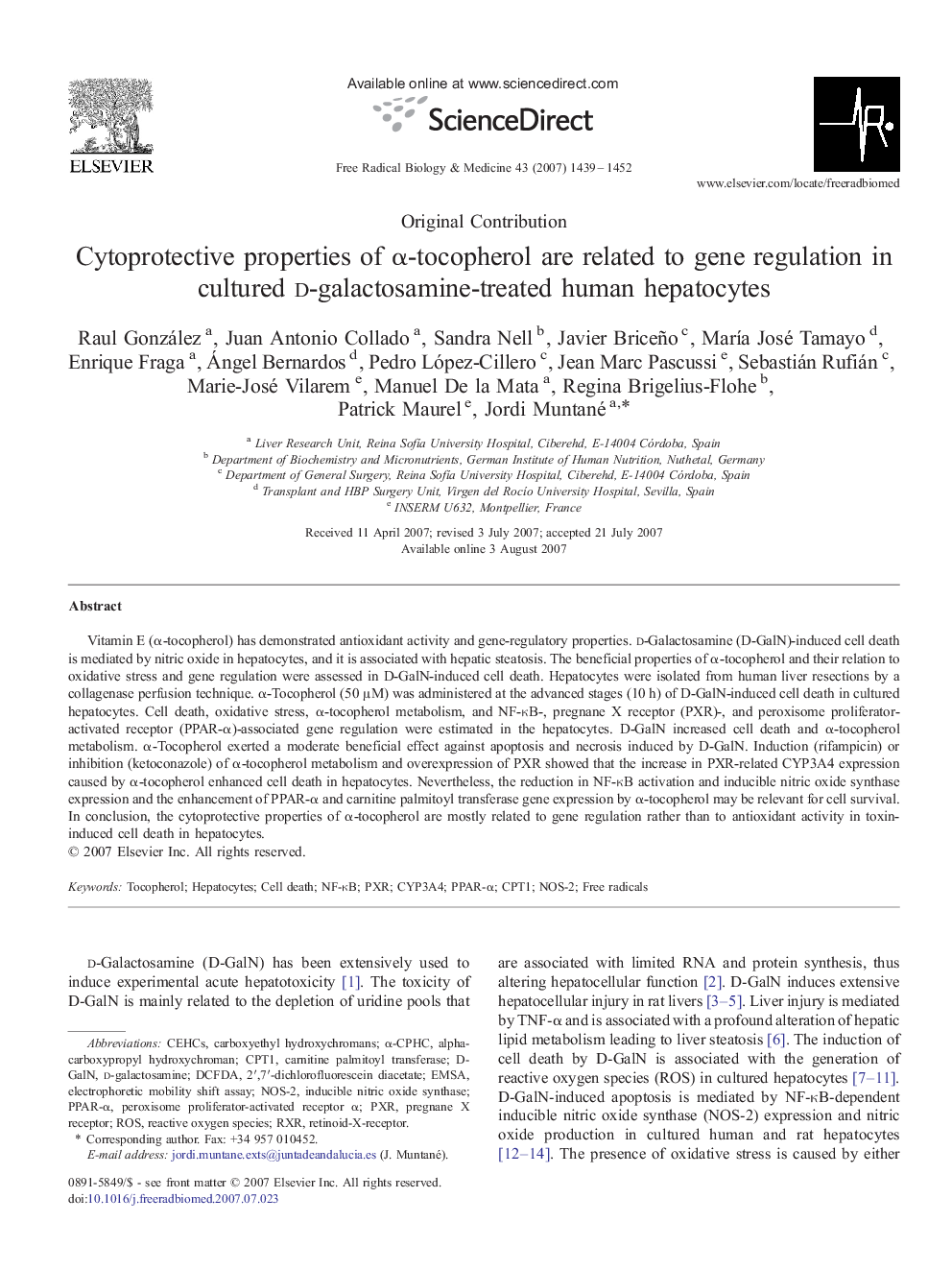| Article ID | Journal | Published Year | Pages | File Type |
|---|---|---|---|---|
| 1911370 | Free Radical Biology and Medicine | 2007 | 14 Pages |
Vitamin E (α-tocopherol) has demonstrated antioxidant activity and gene-regulatory properties. d-Galactosamine (D-GalN)-induced cell death is mediated by nitric oxide in hepatocytes, and it is associated with hepatic steatosis. The beneficial properties of α-tocopherol and their relation to oxidative stress and gene regulation were assessed in D-GalN-induced cell death. Hepatocytes were isolated from human liver resections by a collagenase perfusion technique. α-Tocopherol (50 μM) was administered at the advanced stages (10 h) of D-GalN-induced cell death in cultured hepatocytes. Cell death, oxidative stress, α-tocopherol metabolism, and NF-κB-, pregnane X receptor (PXR)-, and peroxisome proliferator-activated receptor (PPAR-α)-associated gene regulation were estimated in the hepatocytes. D-GalN increased cell death and α-tocopherol metabolism. α-Tocopherol exerted a moderate beneficial effect against apoptosis and necrosis induced by D-GalN. Induction (rifampicin) or inhibition (ketoconazole) of α-tocopherol metabolism and overexpression of PXR showed that the increase in PXR-related CYP3A4 expression caused by α-tocopherol enhanced cell death in hepatocytes. Nevertheless, the reduction in NF-κB activation and inducible nitric oxide synthase expression and the enhancement of PPAR-α and carnitine palmitoyl transferase gene expression by α-tocopherol may be relevant for cell survival. In conclusion, the cytoprotective properties of α-tocopherol are mostly related to gene regulation rather than to antioxidant activity in toxin-induced cell death in hepatocytes.
